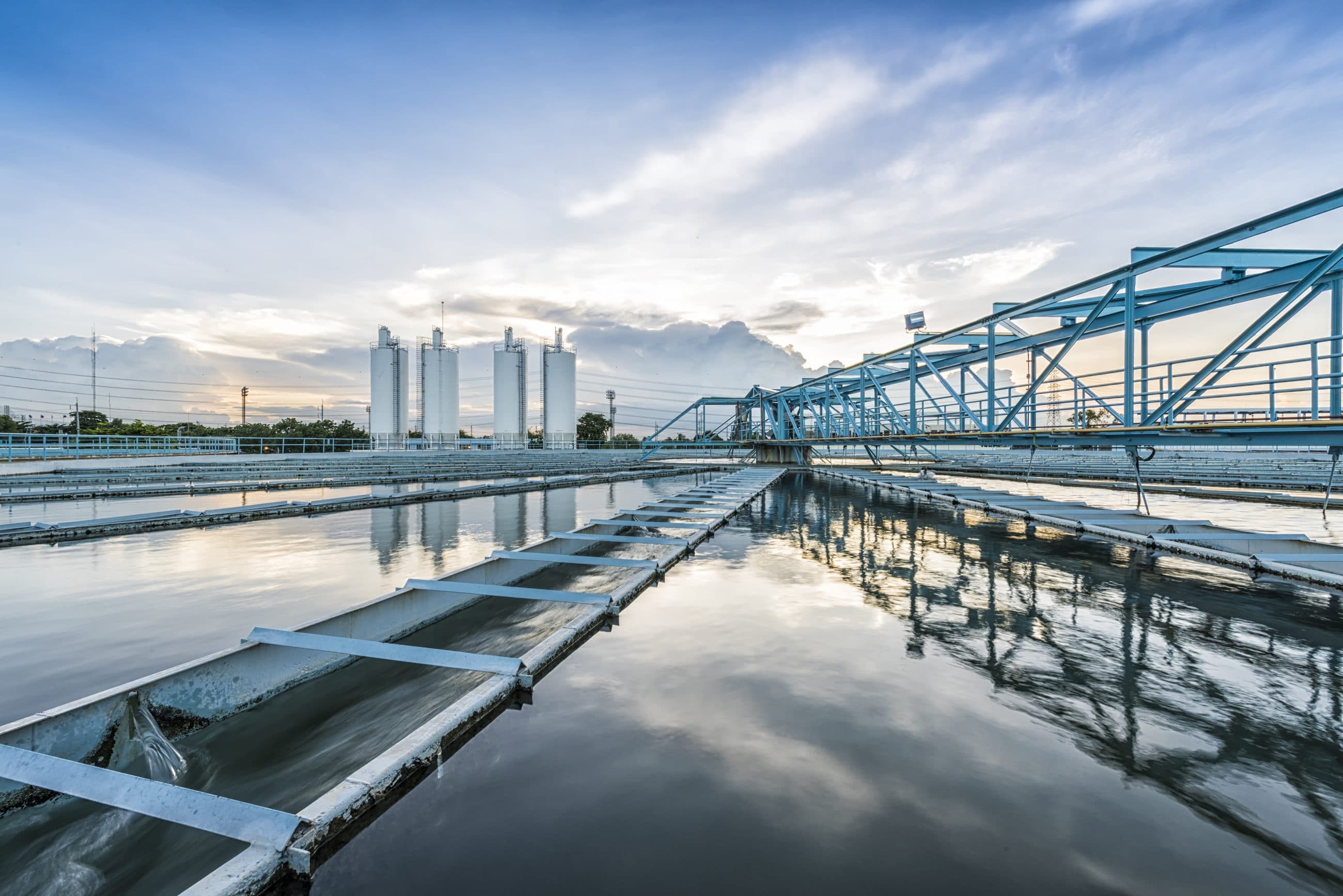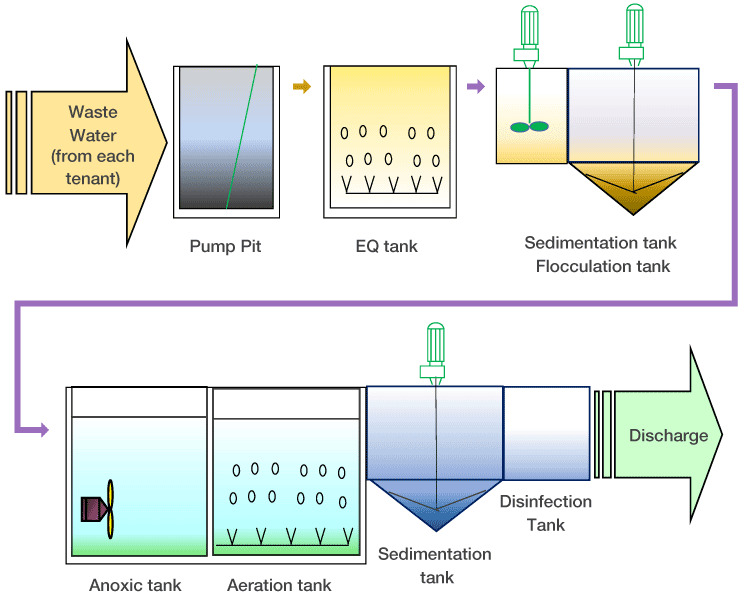Industrial Waste Water Treatment-- Secure the Environment with Professional Water Treatment Services
Key Strategies in Industrial Waste Water Treatment Processes
The treatment of commercial wastewater is a critical element of ecological monitoring, entailing an array of strategies designed to reduce the influence of pollutants. Improvements in modern technologies such as membrane layer filtration and progressed oxidation processes use cutting-edge remedies for boosting therapy efficacy.
Physical Treatment Methods
Exactly how efficiently can physical treatment techniques attend to the intricacies of industrial wastewater? Physical treatment techniques play an essential function in the preliminary stages of wastewater monitoring, concentrating largely on the elimination of solids and huge particulates. Techniques such as flotation, sedimentation, and filtering are important for decreasing the focus of put on hold solids, therefore improving the effectiveness of subsequent therapy procedures.
Sedimentation includes the gravitational settling of solids, enabling for the separation of much heavier materials from the wastewater. This technique is particularly effective in making clear water prior to chemical or organic treatments.
Additionally, flotation protection techniques, which make use of air bubbles to lift put on hold solids to the surface area for removal, are efficient in dealing with wastewater with high concentrations of fats, oils, and greases. Overall, physical therapy methods offer as a crucial first action in the extensive monitoring of industrial wastewater, making sure that the tons on succeeding treatment phases is minimized and improving total therapy efficacy.
Chemical Treatment Methods
While physical therapy techniques lay the groundwork for reliable wastewater administration, chemical therapy techniques are essential for resolving the a lot more complex impurities typically discovered in commercial effluents. These methods make use of various chemical agents to precipitate, counteract, or oxidize dangerous substances, guaranteeing a more detailed removal of contaminants.
One usual approach is coagulation and flocculation, where chemical coagulants such as aluminum sulfate or ferric chloride are included in promote the aggregation of suspended fragments. This process improves solid-liquid separation, reducing turbidity and enhancing water quality. Furthermore, neutralization procedures are used to change the pH of wastewater, making use of acids or bases to reduce the effects of acidic or alkaline streams, specifically.
Oxidation-reduction reactions play a vital role in degrading natural impurities and microorganisms. Chemical oxidants like ozone, hydrogen, or chlorine peroxide are made use of to break down complicated natural substances, making them less damaging or extra biodegradable. Additionally, advanced oxidation procedures (AOPs) incorporate multiple oxidation methods to boost pollutant removal effectiveness.
Biological Treatment Processes
The performance of wastewater therapy is substantially boosted by organic therapy procedures, which harness the all-natural metabolic tasks of microorganisms to decompose raw material and remove pollutants. Industrial Waste Water Treatment. These procedures largely entail anaerobic and aerobic digestion, each tailored for specific kinds of wastewater
Cardio therapy processes use oxygen to support microbial growth, advertising the failure of natural toxins into carbon dioxide and water. Usual approaches consist of triggered sludge systems, where aeration tanks help with the mixing of wastewater with microorganisms, and trickling filters, which urge biofilm advancement on media surface areas.
Conversely, anaerobic therapy processes occur in the lack of oxygen, using anaerobic germs to break down raw material, resulting in biogas production, a sustainable energy resource. Anaerobic digesters are commonly employed in industrial settings for this function, efficiently reducing the quantity of sludge while creating useful navigate to this site biogas.
The selection of an organic therapy method depends on wastewater attributes, treatment objectives, and regulatory requirements. The integration of organic processes in wastewater therapy not only boosts contaminant elimination effectiveness yet additionally promotes sustainability by decreasing chemical usage and sustaining resource recuperation.
Advanced Oxidation Processes

Typical AOP methods include Fenton's photocatalysis, ozonation, and reagent. Fenton's reagent, a mix of hydrogen peroxide and ferrous iron, catalyzes the development of hydroxyl radicals, making it effective for treating wastewater having phenolic compounds and various other recalcitrant materials. Ozonation utilizes ozone as a powerful oxidant, efficient in deteriorating a vast range of natural contaminants while at the same time disinfecting the effluent. Photocatalysis uses light-activated catalysts, such as titanium dioxide, to improve oxidation reactions and remove impurities.
AOPs offer a number of benefits, consisting of reduced sludge manufacturing and the ability to treat wastewater with high focus of natural toxins. However, the implementation of AOPs needs cautious factor to consider of operational parameters and cost-effectiveness, making sure that these innovative methods are suitably incorporated right into existing wastewater therapy systems.
Membrane Layer Purification Technologies

Microfiltration works for getting rid of put on hold solids and germs, while ultrafiltration see this targets smaller organic particles and viruses. Nanofiltration connects the void in between ultrafiltration and turn around osmosis, effectively eliminating divalent ions and organic compounds. Reverse osmosis offers the greatest level of purification, utilized mostly for desalination and getting rid of mono-valent ions.
Membrane layer innovations supply numerous advantages, consisting of reduced power intake compared to typical treatment approaches, modular style for scalability, and the internet potential for water recovery and reuse. Difficulties such as membrane fouling and the need for regular maintenance should be dealt with to guarantee system effectiveness. In general, membrane filtration modern technologies stand for an essential element of contemporary industrial wastewater treatment techniques, promoting sustainability and source preservation in water administration.
Conclusion
In verdict, industrial wastewater therapy uses a diverse variety of methods, including physical, chemical, organic, and progressed methods. Continued advancements in these methods will additionally boost the efficiency and efficiency of wastewater treatment procedures in commercial settings.
The treatment of commercial wastewater is a crucial facet of environmental administration, entailing a range of methods created to mitigate the effect of impurities.Just how effectively can physical treatment techniques resolve the complexities of industrial wastewater?Advanced oxidation processes (AOPs) stand for a sophisticated approach in industrial wastewater therapy, created to properly degrade organic pollutants that are commonly immune to standard therapy approaches (Industrial Waste Water Treatment).In conclusion, industrial wastewater therapy employs a diverse array of techniques, including physical, chemical, biological, and advanced techniques. Continued developments in these approaches will even more enhance the performance and performance of wastewater therapy procedures in industrial setups